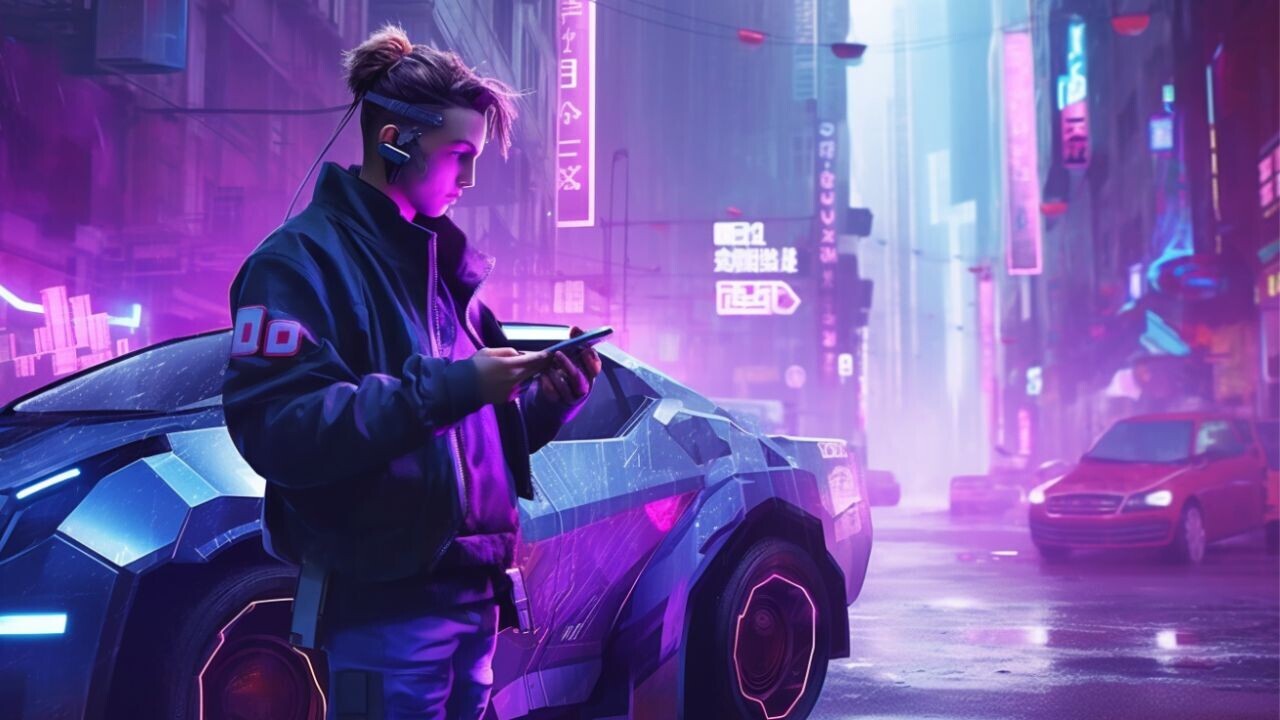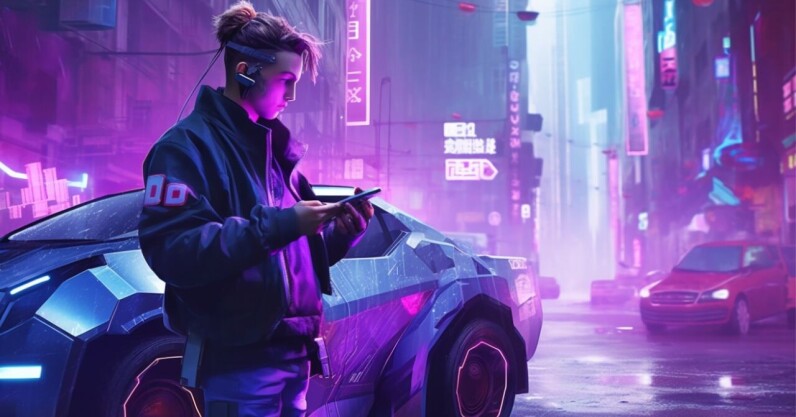
Story by
Andrea Hak
Andrea is TNW’s Branded Content Editor and, as a writer, she’s covered a wide range of topics from ClimateTech to AI and gender bias. She’s Andrea is TNW’s Branded Content Editor and, as a writer, she’s covered a wide range of topics from ClimateTech to AI and gender bias. She’s always on the lookout for stories that explore the social and political impact of emerging technology.
This article features an interview with Nick Foster, former Head of Design for Google X. Foster will be speaking at TNW Conference, which takes place on June 15 & 16 in Amsterdam. If you want to experience the event (and say hi to our editorial team!), we’ve got something special for our loyal readers. Use the promo code READ-TNW-25 and get a 25% discount on your business pass for TNW Conference. See you in Amsterdam!
When we think about the future, our minds tend to conjure up images of cyberpunk cities where flying cars zoom overhead, 3D hologram advertisements pop up as you walk by, and everyone is dressed in sexy post-apocalyptic gear with unidentifiable tech gadgets hanging from Batman-style utility belts.
“We’re sort of stuck in a science fiction fantasy land,” says Nick Foster, former Head of Design at Google X.
Foster has been a designer and futurist for 20 years, working for a wide range of tech companies from Dyson to Sony to Nokia. What he’s discovered over two decades of working in future and speculative design is that:
“Science fiction has really colonised the world of technology futures to an unhelpful degree. It’s very rare that you can build something that came from a book, a movie, or a series that would actually be useful.”
But it’s natural for us to imagine a future of hoverboard skateboards and lightsabers, of evil empires and galactic alliances.
“Whenever we look at the future, because it doesn’t exist yet, by its very nature it has no manifest reality. So we have to tell stories and those stories tend to fall back on the natural tropes of storytelling. They have a hero, they go through an arch, they’re made for entertainment, and they’re mostly dominated by science fiction — exciting space operas and flying machines,” Foster says.
But what’s the problem with living in a sci-fi fantasy vision of the future?

At CES this year, there was a curious exhibition called The Gallery of Flops including long-lost products like the ill-fated Sony Google TV remote featuring a confusing collection of 88 buttons, magnified Nike sunglasses for runners that required the wearer to glue magnets to their forehead, and a horrifying Jason-like face mask that was meant to restore youthful looks through electric stimulation.
The future may not be sexy, but it sure as hell will be practical for you and me.
What all of these varied products had in common was that they cost their companies millions in lost revenue. Foster states,
The highway of history is littered with the corpses of products like that, where people haven’t done the rigorous work and really thought about how it’s going to fit into people’s lives.
Technology can be intoxicating. Those things become ossified into everyone’s brain both in the consumer space and the creator’s space. So that just becomes the primary dominant method of stimulus for creating new products for the future. I’ve worked in this space long enough to see that happening almost homogeneously across the board.
It’s my job to actually design for the future. If you just tell a fantasy and produce sexy renderings of futuristic vehicles, it just doesn’t go anywhere. It gets clicks but it’s essentially the work of marketing, rather than new product development.
The future mundane

Over the last 10 years, Foster’s switched over to the dark side so to speak. Rather than hoverboards and jet packs, he’s been drawn towards the nuts and bolts of everyday life in the future.
“Thinking about what a middle-income family might be experiencing in 2040 is way more exciting than thinking about the most extreme virtual reality life on Mars,” explains Foster.
What he’s talking about is the future mundane: Trying to think about the future in ways that are relatable, ordinary, and normalised, rather than escapist science fiction fantasy futures.
If we are gonna make flying cars, we have to talk about: where we can park them? How old do you have to be to fly one? Are there motorways in the sky? How do we regulate that? What’s the cost? How do these things refuel? We have to really ask those rigorous questions, otherwise, it’s just a fun escape for the afternoon.
Essentially that means, the future may not be sexy, but it sure as hell will be filled with practical and affordable inventions aimed at making your life and my life better (and for all those who don’t have 10k to shell out for a flying skateboard).
Science fiction has polluted our potential for thinking about the future.
That doesn’t mean we can’t have nice things. Amongst the remnants of product flops past, there was an early Nintendo VR headset from ‘95. Aside from its gender non-inclusive branding (“Virtual Boy”), as we see today, it wasn’t an implausible idea. However, in the 90s, the massive price tag this technology came with was simply not worth the rudimentary 3D graphics (nor the neck and eye spasms it induced in some users). And it was certainly not an option for most of Nintendo’s target audience (children and pre-teen boys).
It is possible to get to some of the ultra-futuristic tech you’re dreaming up, Foster says. But you need to take small steps forward and build on existing architecture. For Nintendo, this would have meant waiting until the technology and price tag had developed enough to make it a viable option for their audience — even if that would take another 30 years. (Which by the way also happens to coincide with the time when their target audience — now full grown adults — has the money to buy said virtual toys).
How to start thinking about the mundanity of everyday life in the future

As Foster explained, for companies, it’s just good economics. If you’re just talking at theoretical and abstract levels and not engaging with the lives ordinary people lead, from their desires to the dinners they eat, and the friend and family circles they interact with, you’re not going to convince them to spend money on something new.
His number one tip is to be pluralistic:
We live in such a volatile and changing world now that accurately saying this is where we’ll be in the future is impossible. The further you move out from today, the more uncertain you can be. The way futurists approach long-term projects is by populating them with many different scenarios. As the world changes, you reassess each one. It’s a bit like scenario planning.
Science fiction has gotten into our brains and has polluted our potential for thinking about the future. You need to free yourself of that to build truly useful and sustainable products that real people will use in the future.
Check out Nick Foster’s talk at TNW Conference on June 15-16 to learn more about how to think about the future when designing brand-new products. Use the promo code READ-TNW-25 and get a 25% discount on your business pass for TNW Conference.
Get the TNW newsletter
Get the most important tech news in your inbox each week.
Also tagged with



